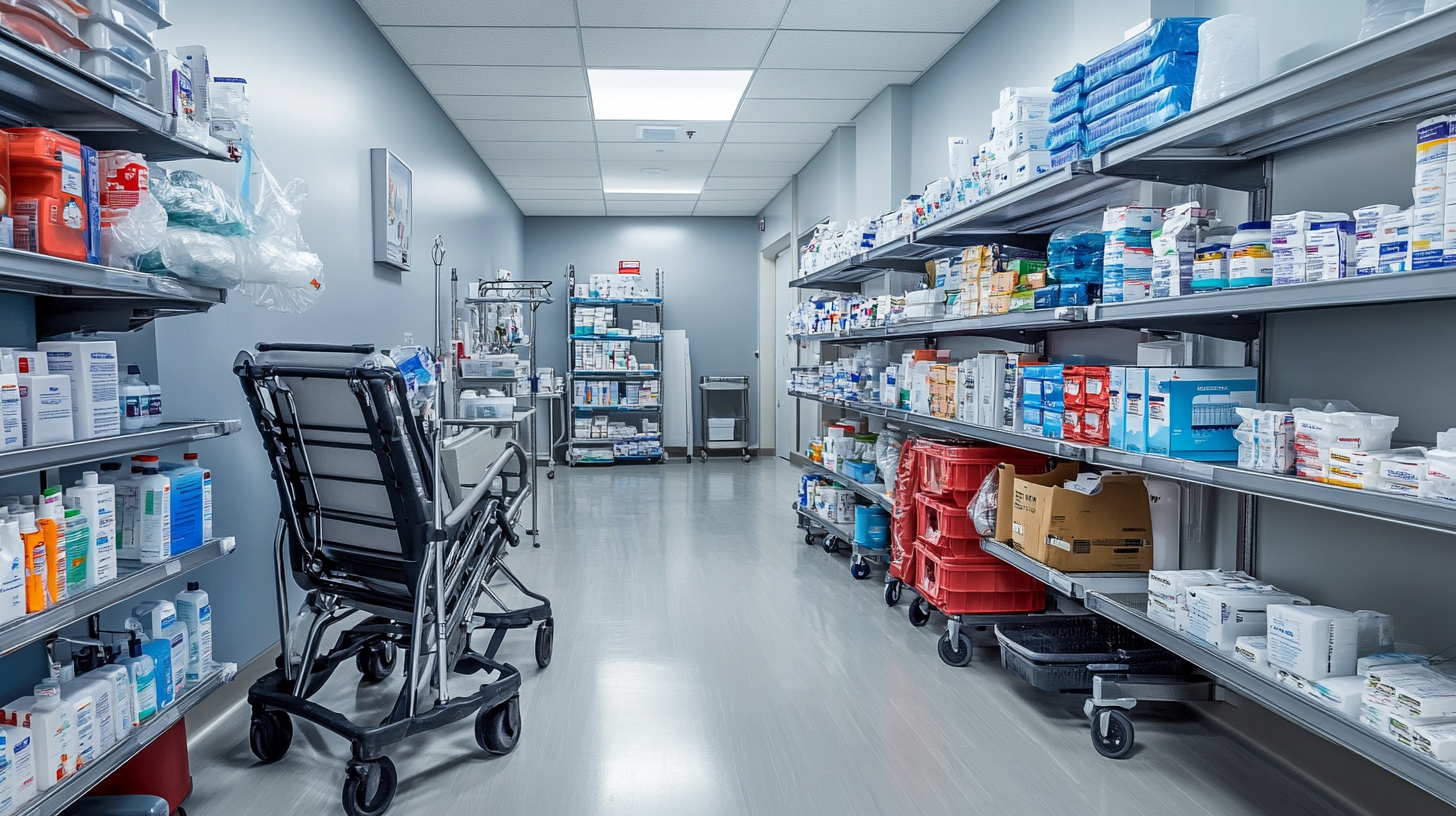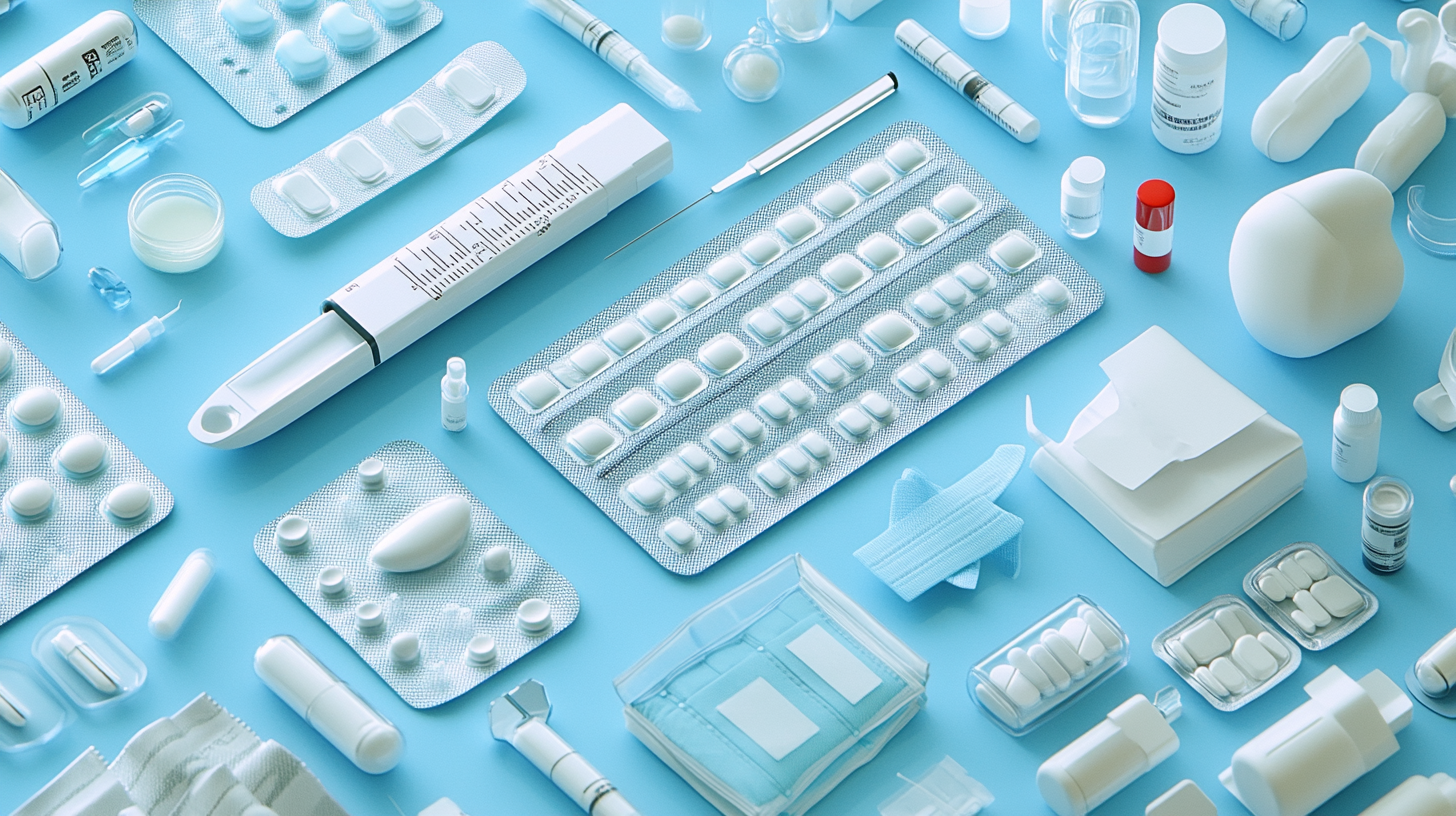Click here to browse our On The Mend Portfolio!
Innovative Options for Health Care Supplies That Enhance Patient Care
As the healthcare industry continues to evolve, the importance of innovative health care supplies cannot be overstated. A report from the World Health Organization indicates that access to quality health care supplies can significantly improve patient outcomes and reduce overall healthcare costs. In fact, it is estimated that approximately 10% of patients experience adverse events due to inadequate or poorly managed medical supplies. This underscores the critical role that effective health care supplies play in enhancing patient care, ensuring that healthcare providers are equipped with the tools they need to deliver high-quality services.
With the rise of technology and increased emphasis on patient-centered care, the market for health care supplies is witnessing transformative changes. According to a recent study by MarketsandMarkets, the health care supplies market is expected to reach $1,200 billion by 2025, driven by advances in medical technology and a growing focus on preventive care. Innovative solutions, such as smart medical devices and eco-friendly supplies, are emerging to meet the diverse needs of patients and providers alike. By focusing on these innovative options, healthcare organizations can not only enhance their service delivery but also contribute to improved patient satisfaction and overall health outcomes.

Emerging Technologies in Health Care Supplies for Improved Patient Outcomes
In today's rapidly evolving healthcare landscape, emerging technologies are reshaping the way we approach patient care, particularly through innovative health care supplies. These advancements not only streamline processes but also enhance the overall patient experience, which is critical for improved outcomes. For instance, smart medical devices equipped with IoT capabilities allow for real-time monitoring of patient vitals, enabling healthcare providers to respond promptly to any changes in a patient’s condition. This proactive approach reduces hospital readmissions and enhances the quality of care.
Additionally, the integration of artificial intelligence in health care supplies has opened new avenues for diagnostics and treatment. Tools powered by AI can analyze vast amounts of medical data, providing insights that help clinicians make quicker, more informed decisions. For example, AI algorithms can identify potential complications early through pattern recognition in patient data, leading to timely interventions that significantly improve recovery rates.
Moreover, 3D printing technology is revolutionizing the production of customized medical supplies. From prosthetics to surgical instruments, 3D printing enables healthcare providers to deliver tailored solutions that cater to individual patient needs. This personalization not only improves the comfort and efficacy of medical devices but also enhances patient satisfaction, ultimately contributing to better health outcomes. As these technologies continue to evolve, their role in enhancing patient care is becoming increasingly indispensable in the healthcare industry.

Sustainable Medical Supply Options That Benefit Patients and the Environment
The healthcare industry is increasingly recognizing the importance of sustainability, not only for the planet but also for improving patient care. Sustainable medical supply options are emerging as an essential element in this balance. These innovations include biodegradable materials, reusable devices, and eco-friendly packaging, which contribute to reduced waste and a lower carbon footprint. By opting for supplies that are environmentally friendly, healthcare providers can actively participate in combating climate change while still delivering high-quality care to their patients.
One significant benefit of integrating sustainable options is the enhancement of patient well-being. For instance, using biodegradable wound dressings not only minimizes landfill accumulation but also reduces the risk of allergic reactions and promotes better healing. Similarly, adopting reusable surgical instruments leads to less waste and can lower costs in the long run. Patients increasingly value organizations that demonstrate a commitment to the environment, resulting in higher satisfaction and loyalty.
In addition, sustainable practices often drive medical supply companies to innovate. As demand grows for greener alternatives, manufacturers are pushed to develop cutting-edge technologies that prioritize both performance and sustainability. This continuous improvement cycle means that healthcare practitioners have access to more effective and safer products, which ultimately translates into superior patient outcomes. The shift toward sustainable medical supplies is not merely a trend; it represents a fundamental change in how we approach healthcare, with the dual goal of protecting patient health and the planet.
Customized Health Supplies: Tailoring Care to Individual Patient Needs
The healthcare landscape is rapidly evolving, with an increasing emphasis on personalized medicine. Customized health supplies are playing a pivotal role in enhancing patient care. According to a report by Grand View Research, the global personalized medicine market is expected to reach $3.2 trillion by 2025, reflecting a significant shift towards solutions that address individual patient needs. This trend underscores the importance of tailoring medical supplies, from prosthetics to daily medications, based on specific patient requirements.
One compelling example of customization in healthcare supplies is the development of 3D-printed prosthetics. These innovative devices are designed to meet the unique anatomical and functional needs of each patient. A study published in the Journal of Rehabilitation Research & Development highlights that using 3D printing technology has not only reduced costs by up to 90% but also improved fit and comfort for patients, leading to better overall satisfaction and function. By leveraging such technology, healthcare providers can ensure that patients receive products that are not only effective but also enhance their quality of life.
Moreover, customized health supplies can extend to pharmaceuticals as well. Innovations in compounding pharmacies allow for the creation of medication tailored to an individual's dosage, flavor preferences, and even specific allergies. According to the National Community Pharmacists Association, about 30% of the medications dispensed in community pharmacies are compounded, illustrating a growing trend towards personalized pharmaceutical care. Such approaches not only enhance adherence but also improve therapeutic outcomes, reflecting a broader commitment to individualized healthcare solutions.
Customized Health Supplies: Tailoring Care to Individual Patient Needs
Smart Health Care Products: Integrating IoT for Enhanced Patient Monitoring
The landscape of patient care is undergoing a transformative shift, largely driven by the integration of Internet of Things (IoT) technology into health care products. According to a report by Grand View Research, the global IoT in healthcare market is expected to reach approximately $410 billion by 2026, growing at a compound annual growth rate (CAGR) of 28.5% from 2019. This rapid growth underscores the increasing demand for smart health care products that facilitate real-time monitoring and enhance patient outcomes.
Smart health devices are now able to remotely track vital signs, medication adherence, and other health metrics. For instance, wearable technologies equipped with IoT capabilities can monitor heart rate, activity levels, and sleep patterns, sending data directly to healthcare providers. A study published in the Journal of Medical Internet Research reveals that continuous monitoring aids in timely interventions, reducing hospital readmissions by up to 20%. The ability to access critical health information instantaneously not only empowers caregivers but also enhances patient engagement, allowing individuals to take an active role in managing their health.
Moreover, the integration of AI and machine learning with IoT devices is revolutionizing patient monitoring. These advanced technologies analyze vast amounts of data to identify trends and predict potential health issues before they escalate. According to a report by Frost & Sullivan, predictive analytics in health care could save the industry about $300 billion annually by preventing adverse events through timely intervention. This proactive approach not only improves patient safety but can also optimize resource allocation within healthcare systems, making them more efficient and effective.
The Role of Telehealth in Transforming Access to Health Care Supplies
The advent of telehealth has revolutionized the way patients access health care supplies, bridging the gaps that previously hindered timely treatment. By enabling virtual consultations, telehealth allows healthcare providers to deliver prescriptions and recommendations right to patients’ homes. This convenience is particularly beneficial for those with mobility issues or living in remote areas where medical facilities may be scarce. Consequently, telehealth paves the way for a more inclusive healthcare system.
Moreover, telehealth platforms often integrate with online pharmacies and medical supply stores, making it easier for patients to procure essential items without the need for physical travel. Patients can receive instructions for using their health care supplies through video calls or messages, ensuring they understand how to manage their needs effectively. This personalized approach fosters a sense of empowerment among patients, as they become active participants in their own care journey.
Additionally, telehealth can be crucial during times of crisis, such as during pandemics or natural disasters, when access to traditional healthcare may be severely restricted. By leveraging technology, healthcare providers can quickly adjust to evolving circumstances, ensuring that patients continue to receive necessary supplies and support. As telehealth continues to evolve, its role in enhancing patient care and transforming access to health care supplies will undoubtedly become even more significant.

View Products
- Bathroom Safety & Shower Systems
- Canes, Knee Walkers, Rollators & Wheelchairs
- Compression Socks, Stockings & Custom Garments
- CPAP Machines, Devices, Accessories & Supplies
- Incontinence Supplies
- Lift, Reclining, and Sleeper Chairs
- Power Scooters, Power Chairs & Accessories
- Ramps & Handicap Access
- Stair, Platform & Portable Lifts
- Blog
Our Locations
Visit Us in CT, NY & CA
Looking for a 'medical store near me'? Call On The Mend for the equipment and service you need!
